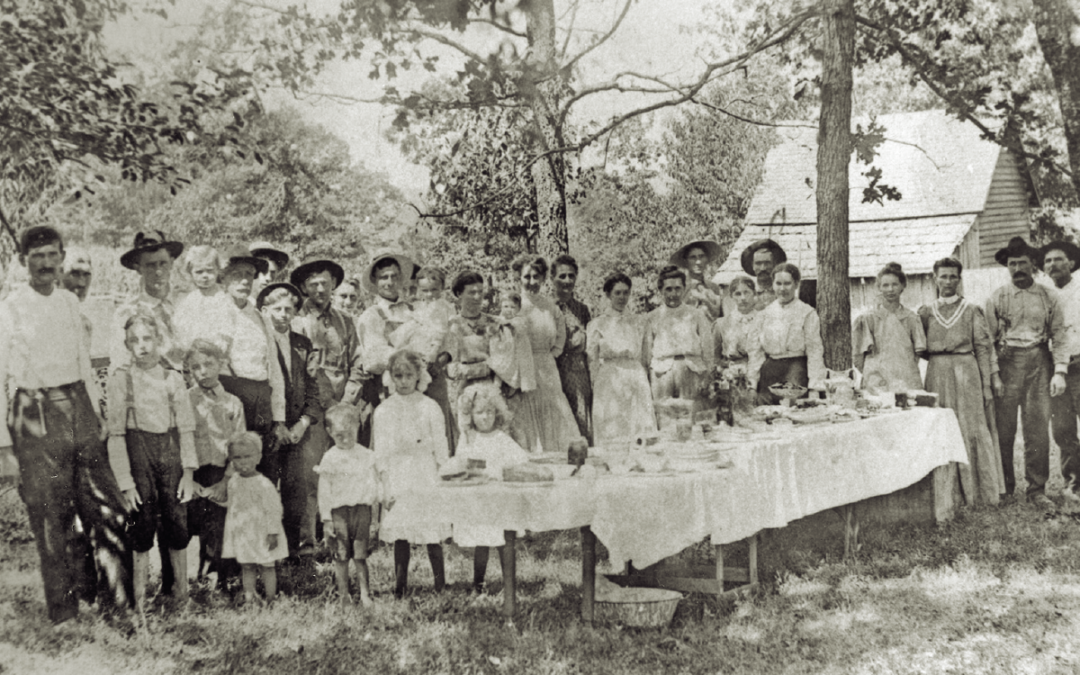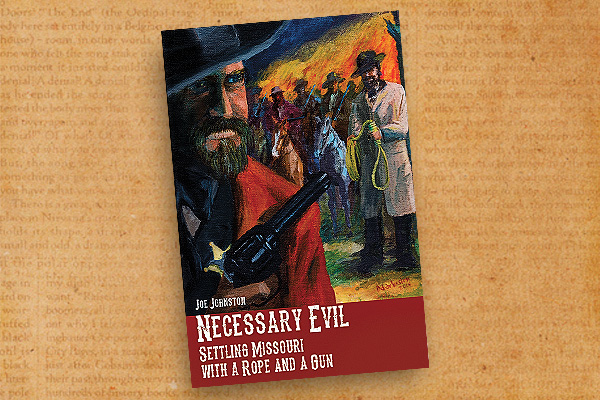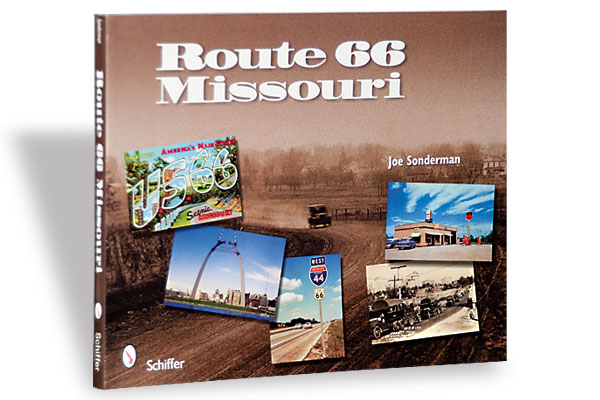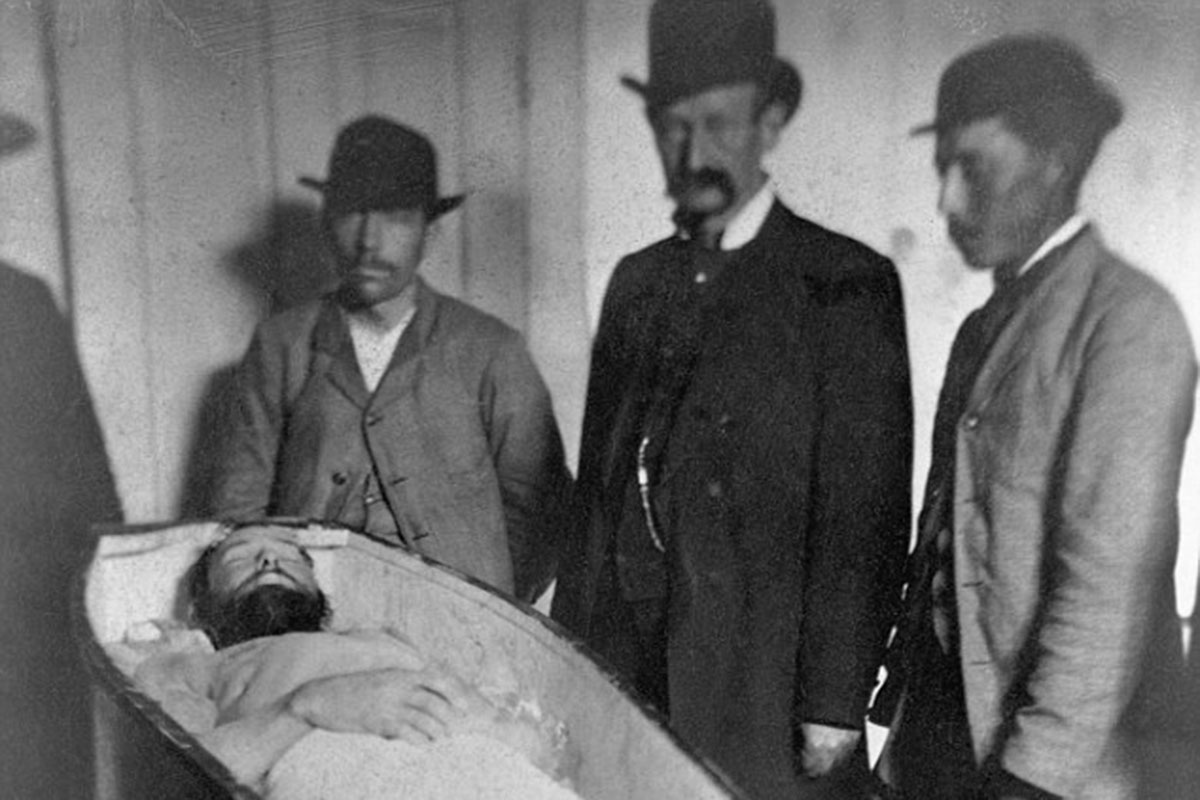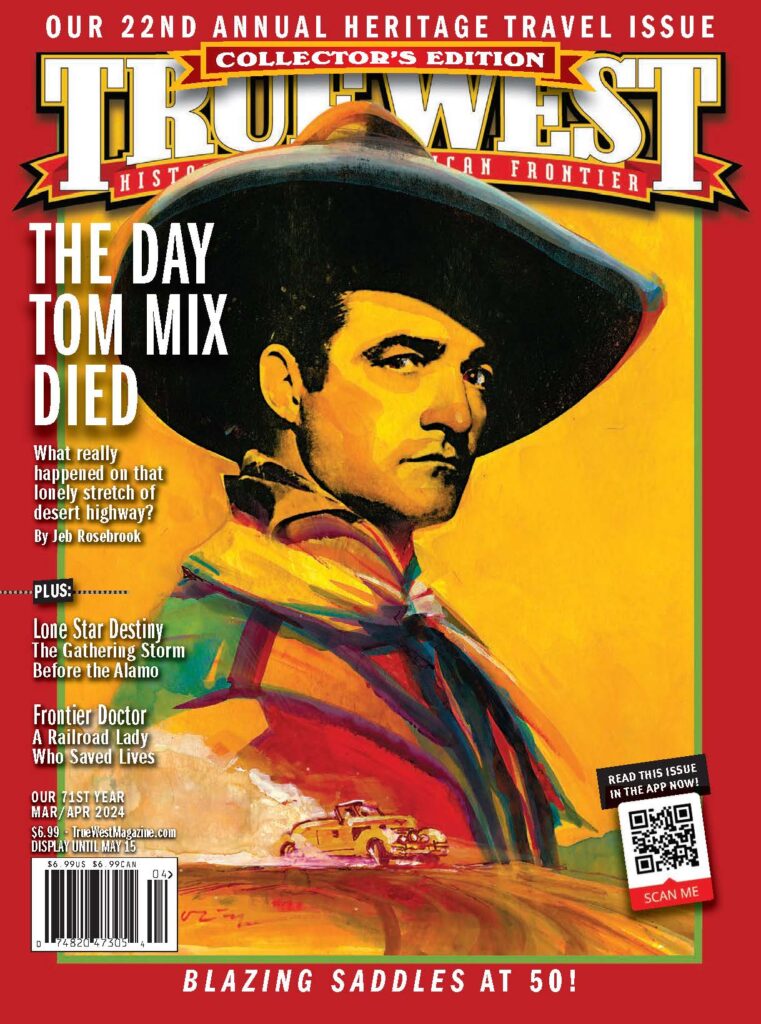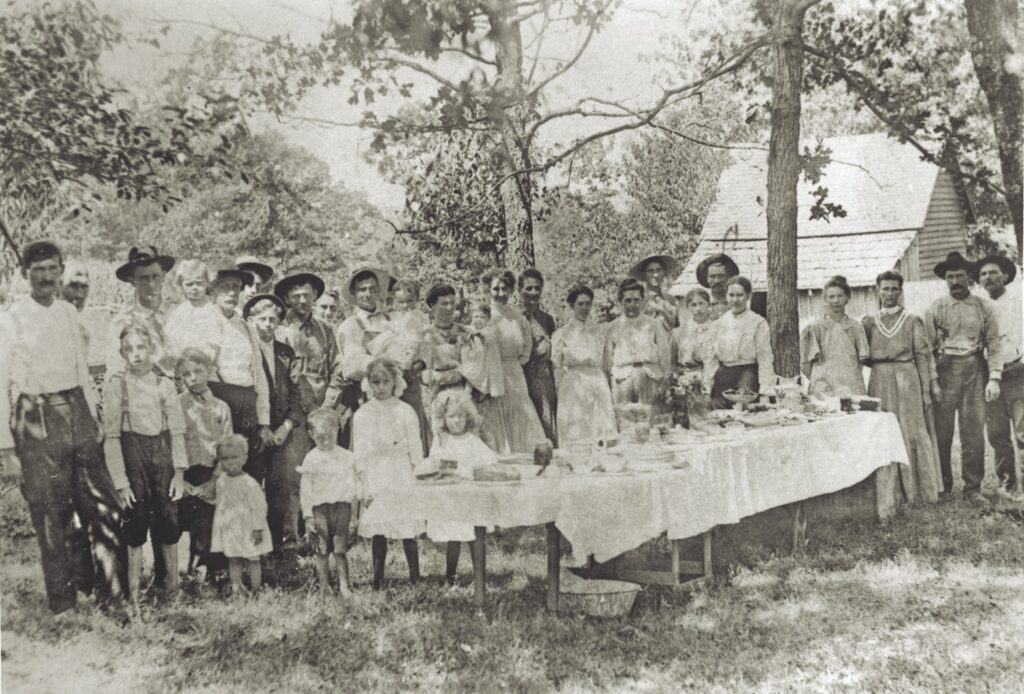
The word “barbecue” in frontier Missouri was used to describe how meat is cooked and not a food category. In 1899 The Miller County Autogram reported, “To barbecue meat is to roast it whole, generally in the open air.” As late as 1947 a Missouri cookbook noted the definition of barbecue was “to cook on a grill or spit over open coals.” Keep in mind that broiling was also used when grilling meat over hot coals in the mid- to late-1800s, but normally indoors.
The first reports of barbecues appeared in Missouri newspapers as early as 1853, and they were commonly held on the Fourth of July. In 1867, Meramec Township, Nevada, and Kansas City held Fourth of July events that included an “old-fashioned” barbecue. Barbecues also were held in connection with political rallies where free meat, lemonade and other items were offered to all. Later, barbecues became more civic-oriented and served as fundraisers and family gatherings. In 1886 a grand barbecue that featured beef, pork and lamb was held to raise funds to buy a steam heater for St. Francis church in Portage.
In 1891 The St. Joseph Herald de-scribed a barbecue pit near Easton as being about 60 feet long, by three feet wide and two feet deep. Iron rails were laid lengthwise above the pit where the half-cut beeves were cooked over red-hot coals in the pit. Ribs were the most requested portion of the barbecued beef at many events, and all was served with fresh bread. In 1900, a famous barbecue man named Christ Brokate was interviewed in the St. Louis Dispatch about his technique. He recommended cutting large beeves into quarters for even cooking and used iron rods, spits or spears to cook the meat in various ways. He suggested basting the meat with butter, pepper and vinegar, aka barbecue sauce.
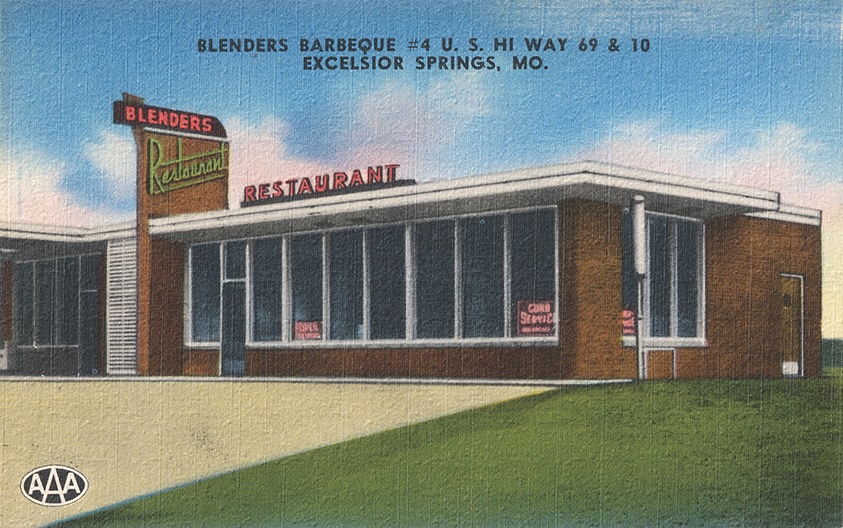
Courtesy Boston Public Library, Massachusetts Digital Commonwealth
Barbecue sauce was used to “sop” the meat as it was being cooked over the hot coals. At a political rally in Bunceton, it was reported that, “With meticulous care, George A. Weyland, official master of the barbecue, has prepared three hundred gallons of barbecue sauce to be used in basting the meat in the trenches. The sauce will be applied with big white-washing brushes. Mr. Weyland enumerated the condiments of the basting sauce—allspice, cloves, cinnamon, nutmeg, black pepper, cayenne pepper, horseradish, sweet marjoram, grated carrots, pearl barley, mustard seed and salt. The barbecue master confided the sauce was good not only to flavor the meat, but in pre-Volstead days had been used to ‘mix a toddy.’” Weyland stated, “Barbecued meat is healthful.”
By the 1930s “BBQ” started appearing in the newspapers for both the sauce and barbecue events, and by the 1940s “B-B-Q meat” was being sold in cans in St. Louis for $.29. Bottled BBQ sauce also started appearing on supermarket shelves all over Missouri cities.


